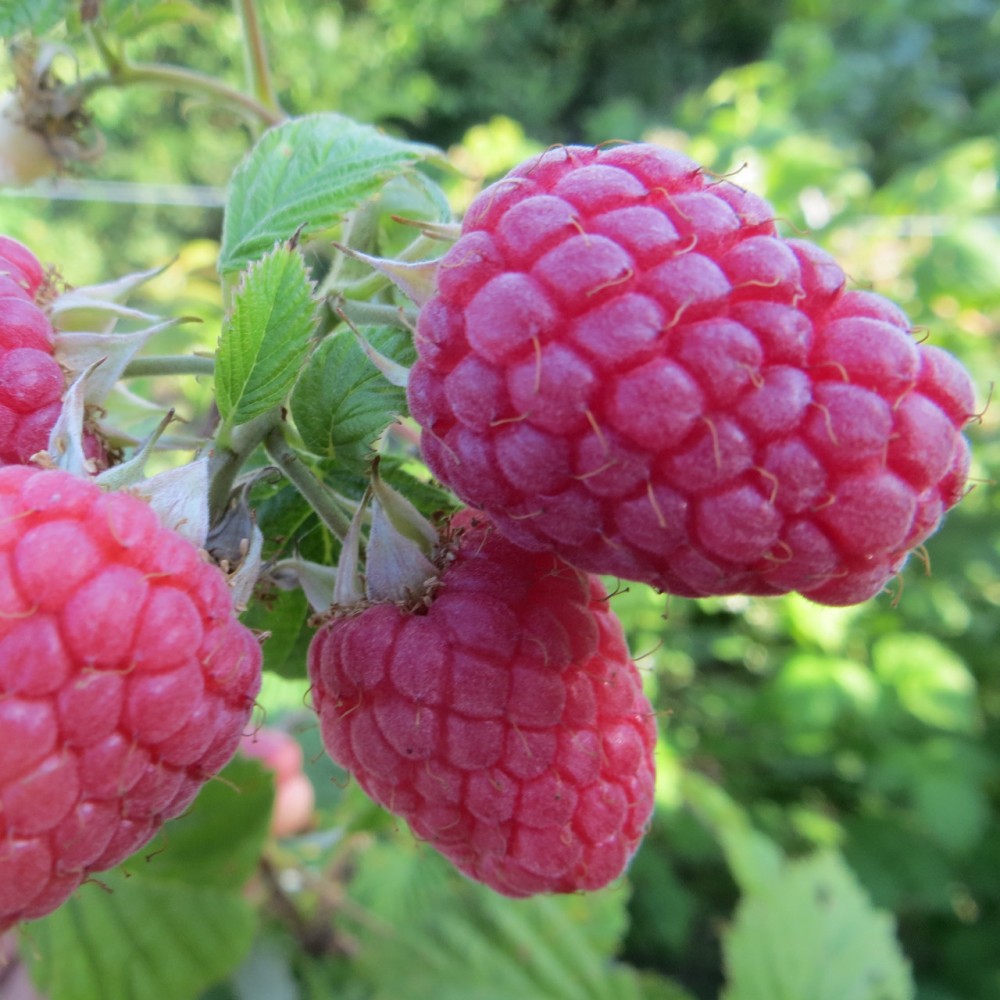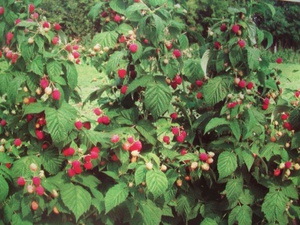 Raspberries are a very tasty and healthy berry, so every gardener tries to plant it on his site. But in order for the bushes to grow healthy and give a good harvest, spring processing of the raspberry tree is needed. Raspberries only at first glance seem to be an unpretentious plant and if an inexperienced gardener makes mistakes in processing it in the spring, he may lose the harvest for several years in advance.
Raspberries are a very tasty and healthy berry, so every gardener tries to plant it on his site. But in order for the bushes to grow healthy and give a good harvest, spring processing of the raspberry tree is needed. Raspberries only at first glance seem to be an unpretentious plant and if an inexperienced gardener makes mistakes in processing it in the spring, he may lose the harvest for several years in advance.
Content
What's the first thing to do with raspberries?
The spring list of works in the raspberry plant includes the following procedures:
- Pruning raspberry bushes after the winter hibernation.
- Garter bushes.
- Top dressing.
- Treatment with special means for the destruction of pests.
Pruning raspberry bushes in spring is carried out in two passes... The first time work with bushes begins immediately, after the snow melts and the establishment of positive temperatures. In different regions of the country, this period occurs at different times. For example, in the middle lane it may even be in early April. But in the northern regions, you can expect freezing temperatures until early May.
 The first step is to cut out all damaged stems that did not tolerate the winter period well. This can be mechanical damage, infected with a disease or stems that have died from severe frosts. If signs of vital activity of raspberry gall midge, which is one of the main pests, are found on the bushes, such stems must be cut off.
The first step is to cut out all damaged stems that did not tolerate the winter period well. This can be mechanical damage, infected with a disease or stems that have died from severe frosts. If signs of vital activity of raspberry gall midge, which is one of the main pests, are found on the bushes, such stems must be cut off.
Since the strong bushiness of raspberries leads to loss of yield, it is necessary to carry out cutting, aimed at reducing the stems. There are two ways to plant raspberry bushes, tape and bush. As experts advise, with the belt planting method, it is recommended to leave twenty-five stems per running meter. With the bush method, not less than eight, but not more than twelve.
In order for raspberry bushes to receive the full amount of nutrients and sunlight, the ideal distance between the stems remaining after pruning should not be less than ten centimeters. But it is even better if a distance of fifteen centimeters is maintained.
Between the first and second cut bushes need to be tied up... This must be done very carefully so as not to damage the awakened delicate kidneys. It is advisable not to tamp the earth around the bushes when tying up. To prevent this from happening, boards are laid between the bushes, along which the one who will work with the bushes will need to move.
The second pruning is scheduled when the raspberries begins to grow actively... The task of the second pruning is to pinch the tops so that all the main forces of the bush go to future fruiting branches, and not to the growth of the raspberry tree.
Spring feeding of raspberries
Regardless of the state of the soil in the raspberry tree in the spring, it is imperative to apply fertilizers. If the bushes grow on scarce soils, then you need to take care of feeding more carefully.
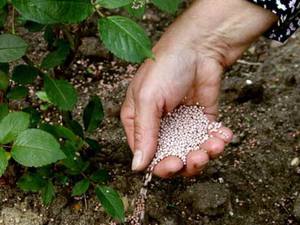 This culture bears fruit well after applying almost all fertilizers. But she also has preferences in the form of potash, nitrogen and phosphorus fertilizers.As a rule, nitrogen fertilizers are valuable for spring feeding, which make it possible to activate the growth of shoots, and the leaf to grow to its full size, without allowing it to be chopped. In addition, the lack of nitrogen plays an important role in the formation of a good harvest, and if the plant lacks it, you can forget about the abundance of fruits.
This culture bears fruit well after applying almost all fertilizers. But she also has preferences in the form of potash, nitrogen and phosphorus fertilizers.As a rule, nitrogen fertilizers are valuable for spring feeding, which make it possible to activate the growth of shoots, and the leaf to grow to its full size, without allowing it to be chopped. In addition, the lack of nitrogen plays an important role in the formation of a good harvest, and if the plant lacks it, you can forget about the abundance of fruits.
If the bushes lack phosphorus, then with an abundance of nitrogen fertilizers, the sprouts will grow, but they will be weakened and stunted.
Potash top dressing is important for a good harvest. In addition, if the potash fertilizer was applied in full, this will allow the raspberry bushes to easily endure the winter period.
You need to start fertilizing the raspberry plant immediately after the snow has melted from the beds in the spring. And the first to introduce nitrogen fertilizers, which must be applied at the rate of not less than ten grams of ammonium nitrate per one square meter of raspberries. Instead of ammonium nitrate, you can take urea and feed the plants in the same proportions.
But it should be borne in mind that raspberries react negatively to increased soil acidity, therefore, experienced gardeners recommend adding one glass of ash under each bush. You can also use an equivalent replacement of ammonium nitrate with potash. Such a replacement will make it possible to replenish the nitrogen reserve of the soil, but will not oxidize it. Before fertilizing, the soil is watered abundantly.
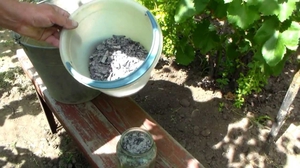 Over the years, some gardeners have developed their own recipe for feeding raspberries. It includes one part nitrate, one part potassium for two parts superphosphate. This mixture is diluted in water. For one hundred grams of fertilizer, you need to take ten liters of water.
Over the years, some gardeners have developed their own recipe for feeding raspberries. It includes one part nitrate, one part potassium for two parts superphosphate. This mixture is diluted in water. For one hundred grams of fertilizer, you need to take ten liters of water.
When the period of loosening the soil in the raspberry tree comes, the time comes for the introduction of organic fertilizers. Both peat compost and humus are suitable as mulch. You can also use manure with straw.
Already in late spring, in May, there is a practice of feeding raspberries with a mullein. The proportion is respected at the rate of five hundred milliliters of mullein per large bucket of water. You need to water so as to pour five liters of solution per one square meter of planting.
How to deal with pests and diseases of raspberries in the spring
Spring is the main time to combat pests that prevent raspberry bushes from bearing fruit and developing properly. There are special pests that cause special damage to raspberries, these are:
- Raspberry beetle.
- Stem fly.
- Strawberry-raspberry weevil.
- Shoot gall midge.
Without spring treatment with chemicals from these insects, raspberries will have little chance of bearing fruit.
The first stage of pest control begins already in early spring, when pruning of bushes is carried out, which is described in the first chapter of the article. Digging soil around the raspberry bushes is also helpful. In the ground, pests lay their larvae, which hibernate there. By thoroughly cultivating the soil, can larvae extract that will reduce the number of harmful insectsthat should have hatched and damaged sprouts, flowers, or fruits. Larvae can also be deposited in last year's foliage, so the raspberry tree must be cleaned.
All pruned raspberry branches in which pests have been found must be burned. Using them in a compost pit can only provoke the breeding of pests in your area.
Fighting the raspberry beetle
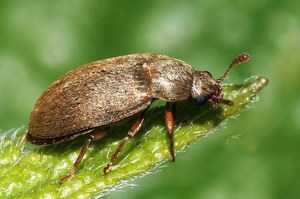 It is necessary to start treating the bushes from pests with chemicals, as well as all work in the raspberry field from early spring. From the raspberry beetle, which actively appears on plants during flowering and destroys flowers, buds, leaves, you need to defend yourself after the snow has melted and the bushes have been cut and tied. An effective fighter against this pest is a nitrafen solution, which is diluted in a proportion of two hundred grams per ten liters of water. Moreover, it is necessary to spray not only the bushes, but also the land that surrounds them.
It is necessary to start treating the bushes from pests with chemicals, as well as all work in the raspberry field from early spring. From the raspberry beetle, which actively appears on plants during flowering and destroys flowers, buds, leaves, you need to defend yourself after the snow has melted and the bushes have been cut and tied. An effective fighter against this pest is a nitrafen solution, which is diluted in a proportion of two hundred grams per ten liters of water. Moreover, it is necessary to spray not only the bushes, but also the land that surrounds them.
Can process raspberries and infused herbs... For the solution, you will need bitter wormwood and marigold flowers. Two hundred grams of the crushed collection of marigolds are poured with ten liters of water and insisted for two days. Wormwood is prepared in the same proportions, only it is kept for about two hours. Then the two solutions are filtered from the rest of the plants and mixed.
Fight against raspberry gall midge
Raspberry gall midge is dangerous for its larvae, which damage the shoots. You can notice damage to the bushes if you look closely at the branches. If there is a larva inside, then growths form on the branch. If found, such damaged branches must be mercilessly cut and burned.
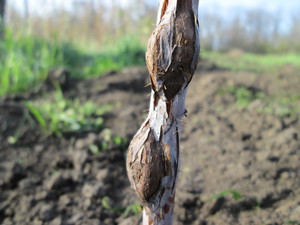 To prevent the emergence of new pests in early spring, it is necessary to dig up the ground ten centimeters treat with fufanon solution... The proportions for its preparation are as follows: for ten liters of water, fifteen, or even all twenty milliliters of fufanon. The second time spraying must be repeated when the buds are tied. But this time the proportions are different, ten milliliters to ten liters of water. Each bush needs to be processed with at least two hundred milliliters of a diluted solution.
To prevent the emergence of new pests in early spring, it is necessary to dig up the ground ten centimeters treat with fufanon solution... The proportions for its preparation are as follows: for ten liters of water, fifteen, or even all twenty milliliters of fufanon. The second time spraying must be repeated when the buds are tied. But this time the proportions are different, ten milliliters to ten liters of water. Each bush needs to be processed with at least two hundred milliliters of a diluted solution.
The same effect on raspberry gall midge has actellik, which is diluted fifteen milliliters in ten liters of water. Spend at least two hundred milliliters on each bush.
Stem fly control
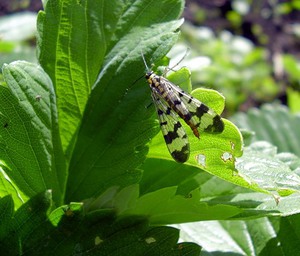 This pest dangerous exclusively to raspberry bushes... Damaging young shoots, stem fly promotes decay of greenery, infecting an infection.
This pest dangerous exclusively to raspberry bushes... Damaging young shoots, stem fly promotes decay of greenery, infecting an infection.
Preventive measures that can reduce the number of these pests are mulching, which will make it difficult for hatched flies to come to the surface.
For better performance, before flowering raspberries, the bushes need to be treated with one of these drugs:
- Fitoverm.
- "Aktellikom".
- "Agravertine".
There are no effective folk remedies that could reduce the number of this pest.
Diseases that are dangerous for raspberries are gray rot and anthracnose... From anthracnose, the bushes are treated with nitrafen in early spring. The solution is diluted so, in ten liters of water, two hundred grams of nitrafen. From gray rot, raspberries are sprayed with a three percent solution of Bordeaux liquid.
Diseases and pests can not only reduce the harvest of raspberries, but also completely nullify all the work of gardeners. The use of chemicals and the timely processing of the land will significantly increase the chances of the raspberry plant to achieve the highest yield possible.


